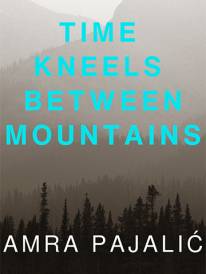Marion Cotillard and James Gray The Immigrant
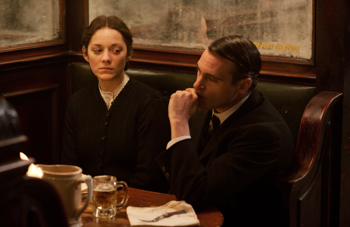
Marion Cotillard and James Gray The Immigrant
Cast: Marion Cotillard, Joaquin Phoenix, Jeremy Renne
Director: James Gray
Genre: Drama, Romance
Rated: MA
Running Time: 117 minutes
Synopsis: In James Gray's The Immigrant, Ewa Cybulski (Marion Cotillard) and her sister sail to New York from their native Poland in search of a new start and the American dream. When they reach Ellis Island, doctors discover that Magda (Angela Sarafyan) is ill, and the two women are separated. Ewa is released onto the streets of Manhattan while her sister is quarantined. Alone, with nowhere to turn and desperate to reunite with Magda, Ewa quickly falls prey to Bruno (Joaquin Phoenix), a charming but wicked man who takes her in and forces her into prostitution. The arrival of Orlando (Jeremy Renner) - a dashing stage magician who is also Bruno's cousin - restores her self-belief and hopes for a brighter future, becoming her only chance to escape the nightmare in which she finds herself.
Release Date: 11th of September, 2014
About The Production
The Immigrant explores James Gray's interest with social class, in particular the immigrant experience that relates to his Russian Jewish heritage. The idea for the story germinated in part from old family photographs taken by his grandfather who came to Ellis Island in 1923. This element of personal history also arises from stories told to the director by one of his great - grandfathers who ran a bar in that era. Gray also chose to center the film around a female protagonist after seeing the Los Angeles Opera's production of 'Il Trittico." This was not the first time opera helped to lay the groundwork for one of his movies – Gray often finds inspiration for his work from the pronounced emotion in the medium's performances.
Gray's first period feature boasts an exceptionally talented creative team, reuniting him with some of his key collaborators. Its richly textured visual palette comes from Darius Khondji ASC, AFC (To Rome With Love, Amour, Se7en). The cinematographer was significantly influenced by Gray's references to paintings by George Bellows celebrated for his realist portrayals of New York at the beginning of the 20th century, and Everett Shinn who depicted the mysterious world of Manhattan's variety theaters during the same era. Together with photographs by the Italian architect Carlo Mollino and in particular Robert Bresson's Diary of a Country Priest, they provided Khondji with a reference source for the lighting and texture that lends the film its religious aspect. Veteran costume designer Patricia Norris sourced the cast's wardrobe from Western Rentals, going back to the -20s and -30s.
Filming took place over 35 days on location in New York City and within the Kaufman Astoria Studios in Queens. The shooting schedule included two nights at historic Ellis Island, the symbol of the American immigrant experience. Gray is scrupulous when it comes to historical authenticity, so securing this real location was very important. Over 200 crew members and 1,000 extras, along with cast and equipment, were ferried back and forth across the island to recreate the arrival point for thousands of European immigrants in the first half of the century. Filming at Ellis Island fortunately took place before Hurricane Sandy, which damaged much of the landmark site.
Interview with Marion Cotillard
Question: Before you met him, what did you think of James Gray as a filmmaker?
Marion Cotillard: I had seen Little Odessa because of the wonderful Tim Roth, who was becoming well known around that time. I immediately responded to the visceral relationship that James has with his characters and the stories he tells. It's very important to me to feel that telling that particular story is a matter of life or death for a director, and I could immediately tell that that was the case with James Gray. Later, I saw and loved all his movies, particularly We Own The Night. And he films women wonderfully.
Question: How did The Immigrant come to you?
Marion Cotillard: James Gray and Guillaume Canet became great friends as soon as they met. They wrote a first draft of Guillaume's new film Blood Ties together in Paris. We met several times, shared good food and long talks about films. There were even some heated discussions when we disagreed about an actor. Some time after that, James Gray sent me an email. He wanted to know if I would let him write a picture for me. It didn't make any sense! I have a list of all the filmmakers I'd dream of working with, and I can assure you James Gray is on that list. I should have been asking him. I can't express how I felt when I read his email.
Question: What did you like about the story?
Marion Cotillard: It's a very personal movie for James Gray. And what's beautiful is that it's a costume drama built on the scale of this little lady. It could be a big epic about a Polish immigrant coming to New York. But it's an intimate work, a portrait, a character study.
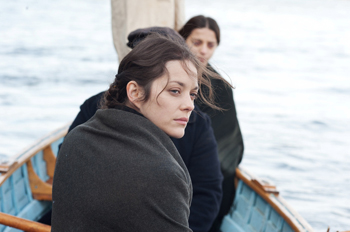 Question: The big challenge for you, who didn't speak Polish, was obviously the language.
Question: The big challenge for you, who didn't speak Polish, was obviously the language.
Marion Cotillard: When I want to make a movie, I focus on the beauty of the story and the character. That's why I didn't panic immediately! Then I had to start working, and it got tough. There is not a single word that sounds like English or French in Polish. And yet I had no choice. I had to do everything I could to speak Polish without the hint of an accent. I had very little time, just over a month between Rust And Bone and The Immigrant. I worked with different coaches, one of whom was the actress who plays my aunt in the film. Mid-shoot, James Gray came to me, startled, and said: You sure have a lot of Polish dialogue! He had just realised that he had written me twenty pages of Polish dialogue. Whenever I had a free minute on the set, I absorbed myself in my notebook. I dreamt for it to be perfect.
Question: Ewa sounds very different from you in real life. Did you find her voice thanks to the language?
Marion Cotillard: I always try to disappear into the character as much as possible, and to find a specific way for her to speak, even in French. Polish brings a different vocal pitch, which helps to give a specific identity to the character. Speaking English in a Polish accent was difficult, but it allowed me to use a different voice. I went through a lot of books at the Polish bookstore in Paris, and saw as many Polish films as I could to 9 listen to the language. I knew where my character was from, and I needed to understand her social background and to know more about her life. Ewa is an educated woman who trained as a nurse. She went through horrendous things that gave her great resilience. What she wants is to make a life for herself in this new country, but not without her sister. She shows amazing strength to find her. I have always been very respectful and in awe of the Polish people, and felt very happy to play a Polish character.
Question: What was shooting on Ellis Island like?
Marion Cotillard: Everyone in the crew was emotional; you could sense it, because their families had arrived there at some point. It was so inspiring: the technical crew, the extras, everyone had a moving story to tell. James himself shared a lot of memories of his family. There's a scene where Ewa doesn't know how to eat a banana. That's directly from his grandmother. In another scene, which is not in the final cut, she mistakes pasta for worms.
Question: James Gray and Joaquin Phoenix have made four movies together. How did you find your place?
Marion Cotillard: I certainly got mixed up with an old couple! They're both very generous and endearing. Sometimes, when I saw that they were going to keep talking for five hours, I would tell them: See you tomorrow! It sounds fascinating, but I have a kid and I have to get home. Their working relationship is wonderful to observe. And Joaquin is an impressive actor. We met every day before the shoot started, to discuss our characters. That's when I met him for the first time. He has impeccable instincts, like a wild animal. The character of Bruno was difficult for him, he struggled a lot, and it was very moving to see him fighting with himself. Sometimes, at the end of the scene, he would come up to me and ask me to forgive him for what his character was doing to mine. I had never met someone quite as touching.
Question: What about Jeremy Renner?
Marion Cotillard: He joined quite late, but immediately felt part of the family. The four of us were like brothers and sister. I realise now that we all share an extreme sensitivity and that we all have to struggle with it. It made us closer. For Ewa, who is drowning, Orlando looks like a lifeboat that could save her. Each time she sees him, she wants to believe that she will escape, and she's full of hope.
Question: What memories do you keep today of The Immigrant?
Marion Cotillard: It was a beautiful experience, with blessed times and others that were more difficult, because we didn't have all the necessary funds. I loved Ewa and her spirit. And I formed a bond with James Gray that goes deeper than any other I have had with a director.
James Gray On Writer Richard Menello
Richard Menello passed away on March 1, 2013. He worked with James Gray on the screenplay of Two Lovers in 2008 before co-writing The Immigrant.
'Ric died not too long after I showed him The Immigrant. I'm so grateful that I got to show him the movie before he died. His death has been very difficult for me. He was very close to me and – I hope – I to him.
He had a great classical knowledge and a tremendous knowledge of movies but not just movies. He was the best person to have a dialogue with. He lived in New York and I live in Los Angeles. I would give him my basic ideas for a story and we would talk. When the script was completed, that was when his participation on the film more or less ended. He never came to the set. Of course I would still call him up to tell him about an actor or a scene. And then I would just show him the film when it was done.
Last night I watched Five Fingers with James Mason and I wanted to call him up to talk to him about it. I loved him very much."
- James Gray, March 2013
Interview with James Gray
Question: Question: How personal is The Immigrant?
James Gray: This movie is very personal and has a lot of links to my own family, but it's not autobiographical at all. Personal means issues and emotions that are close to you, that you can understand deeply and know how to express, as opposed to autobiographical which refers to facts of your life. My grandparents came over from Russia or Ukraine depending on what era you're talking about, from Ostropol, a town not too far from Kiev. My grandmother's parents were murdered during a pogrom by White Army troops. And in 1923, my grandpa and grandma came to the United States by way of Ellis Island. I heard of course many stories about Ellis Island and I had been somewhat obsessed with it. The first time I went, in 1988, was before they had restored the island, it was almost as if it was frozen in time. It was haunting, with half-filled immigration forms on the floor. To me it seemed that it was filled with ghosts – the ghosts of my whole family. So I had wanted to make a picture that sprang from that. At the same time, my great-grandfather on my mother's side ran Hurwitz's, a restaurant on the Lower East Side, and knew all kinds of unsavory types. I started reading about that and discovered a character named Max Hochstim who was a local pimp. That's how I put together the story of Bruno going to Ellis Island to recruit single women who weren't allowed into the U.S for his harem. This was an interesting story coupled with the kind of wrenching dislocation that my grandparents felt coming from Eastern Europe to the United States. The immigration process was filled with a lot of longing and angst, and of course a lot of trepidation.
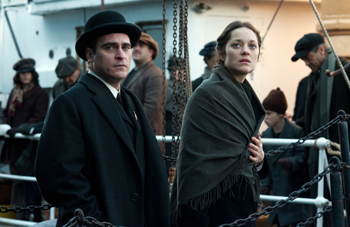 Question: The big difference between your Russian Jewish family and Ewa - 'the immigrant" - is that she is a Polish Catholic. Why did you make that change?
Question: The big difference between your Russian Jewish family and Ewa - 'the immigrant" - is that she is a Polish Catholic. Why did you make that change?
James Gray: I did that for many reasons. First of all, I wanted Ewa to be out of place, even in the Lower East Side where everyone was an immigrant. I didn't want her to fit in, not even in that way. And then, there was the fact that the story is about the idea that no one is so low or awful as to be forgotten or hated. No matter how bad, I believe that everybody is worth examining. And that is a very Franciscan idea. I thought of Robert Bresson and Diary of a Country Priest, particularly for the confession scene. I wanted something austere and mystic. But the film was never meant only to be an homage to Robert Bresson. Like all my films, it was also partly inspired by the traditions of opera and melodrama. Through outsized emotions and dramatic situations, there is a greater truth if you will. This is why the film is scored with Puccini, Gounod and Wagner.
Question: This is also why, for the first time in your career, you built your story around a female protagonist.
James Gray: In 2009 I saw the Los Angeles Opera's production of Il Trittico, with William Friedkin directing the two tragedies and Woody Allen the comedy, and I was deeply moved. The second operetta in the program, 'Suor Angelica," implanted the thought in my brain: I wanted to make a movie with a female protagonist in which the emotions are large, complicated, and pure. 'Suor Angelica" focuses on a woman who is a nun. It's pure melodrama, an outsized dramatic situation that has the courage of its emotions. When done right, melodrama is the most beautiful thing because nothing is fake. The artist, when making the work, believed completely in the truth of the emotion. I was in tears at the end. Opera conveys emotion in its purest form--without pretense, without cynicism, without irony. It is as close to the human heart as any medium, a direct path to our sympathies. I really tried to push The Immigrant in this direction. And having a female protagonist enabled me to explore grand emotions without the macho component that's part of the male persona in Western culture. Ewa is both in control of her own destiny and a victim. She feels guilty about her own sins, perceived or real. She has a lot of strength.
Question: Did you write the part for Marion Cotillard?
James Gray: I did. I had not seen anything that she had been in but met her after befriending Guillaume Canet. I went to dinner with him and Marion Cotillard came along. I thought she had an amazing face. She reminded me of Renée Falconetti in Dreyer's The Passion Of Joan Of Arc. I thought, this woman doesn't have to say anything. She's so expressive she could be in a silent movie. Of course, I ended up giving her a ton of dialogue! But I wrote the movie for her because it's about an immigrant and I thought she could convey a very non-verbal state of soul. I don't think I would have made the movie without her. The big challenge obviously was her Polish, which turned out to be fantastic. One day, I asked the actress who plays her aunt what she thought of Marion Cotillard's Polish. She said it was excellent, but that she had a slight German accent. I spoke with Marion Cotillard and she said: I know, my character is from Silesia, which is between Germany and Poland, I'm doing it on purpose. That's how precise she is! It knocked me out.
Question: What about the enemy cousins in the story, Joaquin Phoenix (Bruno) and Jeremy Renner (Orlando)?
James Gray: I also wrote the part of Bruno for Joaquin Phoenix. Joaquin Phoenix and I are very much in sync. He always understands what I'm trying to express. I also think he's a great actor. He has the ability to convey such inner life in his characters, and the whole plan for the movie was that he would be elusive and mercurial as a manipulator. He's a pretty horrendous person in the film, but he remains desperate to survive. Even he feels some sense of love, however screwed up. He too can be redeemed. As for Orlando the magician, I wanted him to be a romantic hero who was also a troublemaker. I thought he should look both stocky and graceful. Jeremy perfectly understood that Orlando was amazing in many ways – lighter than air – but also that he had a self-destructive component, that he was a homeless man, always on the move. There's something of the holy fool about him. Jeremy Renner has tremendous ease in front of the camera. He's very inventive. I was really a big fan.
Question: Tell us a bit about what it was like to shoot at Ellis Island.
James Gray: Shooting there was quite difficult. The parks department people were very helpful, but the place is always open as a museum, so we had to shoot everything at night. That proved exceedingly hard: huge lights, blasting brightly into so many enormous windows, each twenty feet high. And the Great Hall at Ellis Island is actually on the second and third floor of the big Beaux Arts building, so we had to get cranes to mount the lights. Plus since it's Ellis Island, we had to mount the lights on barges. Then we had to get all those extras there, in costume, and feed them at 2am. It was a major undertaking.
Obstacles aside, we were thrilled to be there. To my knowledge, The Immigrant is the first film to shoot at Ellis Island for what it originally was, not as a tourist attraction. I tried hard to retrace my grandfather's steps when he first entered the United States in 1923. I tried to model the scene as closely as I could to his descriptions. I recalled him telling me how he waiting in line in the baggage room, then went up to the Great Hall and sat on a bench for hours, surrounded by others to whom he didn't speak. He described the Ellis Island food – he didn't know how to eat a banana, biting instead into the unpeeled fruit. He spoke about thinking spaghetti with tomato sauce was bloody worms, and so on. My grandparents were stunned to know about the Ukranian dance troupe show they'd missed, which unfolded in the Great Hall. Ellis Island had many shows to entertain the immigrants. Enrico Caruso sang Puccini for them once, and we recreated this show in the film. My grandfather also told my father about the ferry, which shuttled him to New York after he passed muster with the inspectors. Amazingly, that ferry still exists today as a private – and very unseaworthy – boat in the Hackensack Harbor. We scouted it and planned to shoot on it, but in the end the coast guard claimed if we tried to stage equipment and extras on it, it would sink to the bottom of the Hudson.
Question: There's a great scene where Orlando does a show for the immigrants at Ellis Island. Did that come from your research?
James Gray: Absolutely. They gave performances in the great hall for the immigrants. There is photographic evidence of a dance troop for instance. You see the great opera singer Caruso in that scene. He really performed there. I tried to make the show as authentic as I could, and asked the opera singer Joseph Calleja, who is considered the modern-day Caruso, to be him. It seemed to fit in with the operatic spirit of the piece. I was shocked when I found out that there had never been a movie made in Ellis Island for what it was, an immigration center. A handful of pictures have been shot there since its restoration, but they didn't recreate the old Ellis Island. Kazan recreated it for America, America, as did Coppola for The Godfather Part II, but neither of those directors had the opportunity to shoot in Ellis Island. So I had what I felt was a pretty unique opportunity, and tried to make it as accurate as possible. I read many books, and of course looked through tons of photographs and my whole family's paperwork. When I went to Ellis Island with my grandfather, there was a woman on the tour with us who was crying. She didn't speak much English but my grandfather spoke with her, and apparently she and her sister had been separated there. I thought that was a good premise for a story.
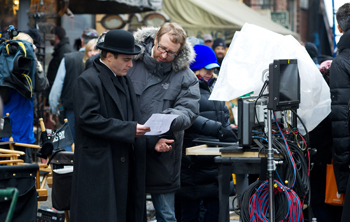 Question: The Immigrant is visually stunning. How did you work with your director of photography, Darius Khondji?
Question: The Immigrant is visually stunning. How did you work with your director of photography, Darius Khondji?
James Gray: I was trying to achieve a visual beauty that mirrored the operatic nature of the story. I worked very well with Darius, who is a man of great sensitivity. We took trips to museums, we looked at paintings and also at autochromes – colour photographs from the early 20th century. We also looked at Polaroids from the 1960s by the designer Carlo Mollino. They are the closest thing achieved by modern technology to the autochromes in terms of the colour saturation and the density of blacks. Darius and I just talked a lot about colour and the frame itself, what part of the set would be lit and why. My other films were meant to be naturalistic. You could always sense where the light was coming from. I abandoned that because I wanted to tell a fable.
Question: How is this movie a fable?
James Gray: When you reach for myth or fable, you're trying to reach for a truth: what it means to try to survive and function in society. Ewa is a hero in classical terms, in the sense that she achieves something through great struggle. What impresses me so much about Bresson, Dreyer or Fellini is their ability to get rid of the noise, to focus on what is basic: the struggle to be a person in this world. This is where I am now. Before The Immigrant, I didn't have the opportunity to make a film that didn't have any genre underpinnings. I wanted to lose genre, to make something that was its own genre, an opera translated to a movie.
The Immigrant
Release Date: September 11th, 2014
MORE



